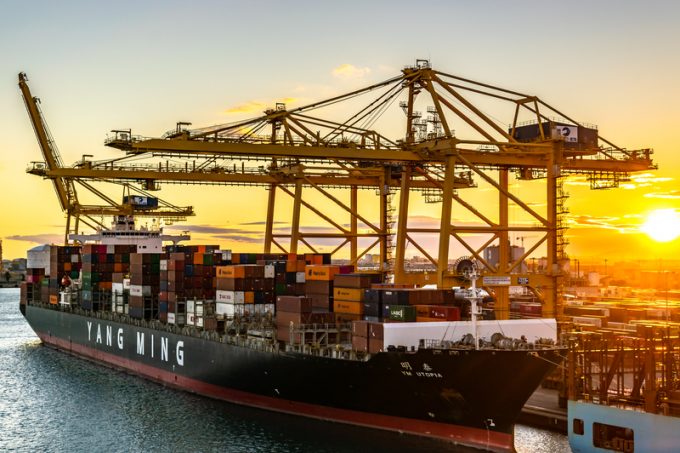NOCC adds third ‘ammonia-ready’ PCTC newbuild orderbook
Norwegian Car Carriers (NOCC) has added a third ‘ammonia-ready’ 7,000ceu LNG-powered ship to its two-vessel, ...
TFII: SOLID AS USUALMAERSK: WEAKENINGF: FALLING OFF A CLIFFAAPL: 'BOTTLENECK IN MAINLAND CHINA'AAPL: CHINA TRENDSDHL: GROWTH CAPEXR: ANOTHER SOLID DELIVERYMFT: HERE COMES THE FALLDSV: LOOK AT SCHENKER PERFORMANCEUPS: A WAVE OF DOWNGRADES DSV: BARGAIN BINKNX: EARNINGS OUTODFL: RISING AND FALLING AND THEN RISING
TFII: SOLID AS USUALMAERSK: WEAKENINGF: FALLING OFF A CLIFFAAPL: 'BOTTLENECK IN MAINLAND CHINA'AAPL: CHINA TRENDSDHL: GROWTH CAPEXR: ANOTHER SOLID DELIVERYMFT: HERE COMES THE FALLDSV: LOOK AT SCHENKER PERFORMANCEUPS: A WAVE OF DOWNGRADES DSV: BARGAIN BINKNX: EARNINGS OUTODFL: RISING AND FALLING AND THEN RISING

THE Alliance vessels have been sailing around the Cape of Good Hope, rather than via the Suez Canal – but are still beating rival carriers in carbon emission reductions, according to Xeneta’s latest data.
Yang Ming, recently the surprise winner in Xeneta’s emissions study of the Asia-Europe tradelane, is now touted as the top carrier on the Europe-Asia backhaul as well.
Yang Ming, with a Carbon Efficiency Index (CEI) score of 80.4, beat CMA CGM’s 88.3, HMM’s 89.4 and MSC’ 124.4, despite the fact that its ships are going further, via the Cape, which could be expected to increase CO2 emissions.
Xeneta was asked on social media: “…could you elaborate on how adding two weeks of sailing and roughly 1,000 tons of fuel consumption goes hand in hand with a better scoring?”
Market analyst Emily Stausbøll told The Loadstar: “It is more to do with slow-steaming… regardless of whether ships are going through the canal or around Africa, they have slowed down enough to make up for it.”
The extraordinary ability of ships to reduce fuel burn and CO2 emissions if they slow down is well documented. However, in theory, this would create a shortage of capacity, bringing more ships and more fuel-burning engines into the trade.
Ms Stausbøll said that could happen, if demand was high. She explained: “Ultimately yes, then, clearly slow-steaming is a problem because it requires more capacity. But in today’s market, where we’re seeing an 8% decline in volumes, demand is so low… that there isn’t really that same need for extra capacity.”
Xeneta and Marine Benchmark’s “Naming and Faming” project, a rebrand of carrier heroes and villains, as Xeneta conceived it, uses CEI, a straightforward tonne-mile metric, to measure efficiency on individual tradelanes. Maritime experts have said this measurement, or one like it, should have been adopted by the International Maritime Organization, instead of the convoluted CII/EEXI scheme, which has drawn criticism from shipowners and environmental groups.
However, SeaRoutes recently questioned Xeneta’s methodology, telling The Loadstar that even if CEI was effective as a metric, measuring according to individual tradelanes might be sub-optimal.
VP of sales Jocelyn Hansen said in March: “It does not provide enough intelligence to use the data for performance, as the difference of CO2 at a port pair level is so significantly different.”
Check out this clip of Steve McCrindle, DP World’s port operations director at Southampton, explain to The Loadstar’s Nick Savvides, the emissions-cutting challenges.
Comment on this article